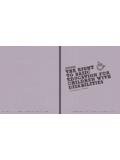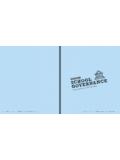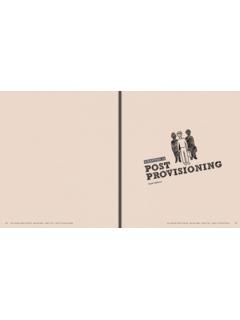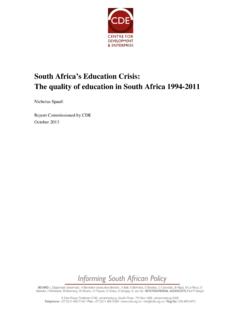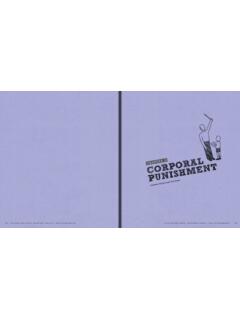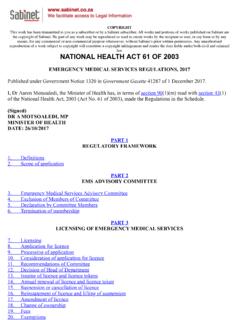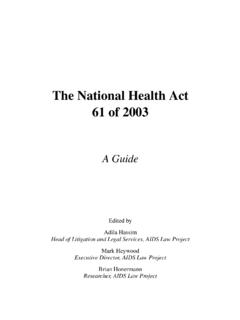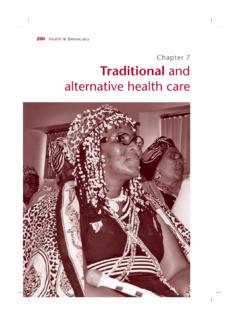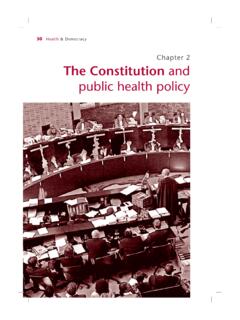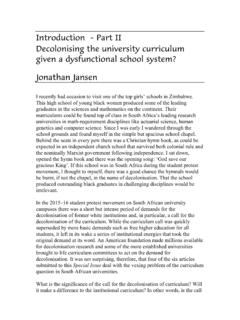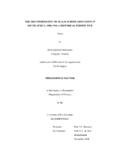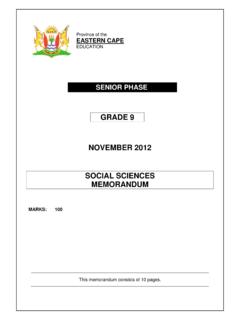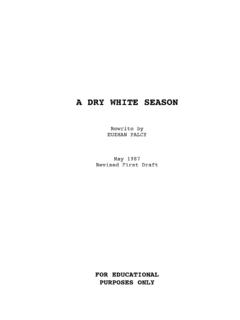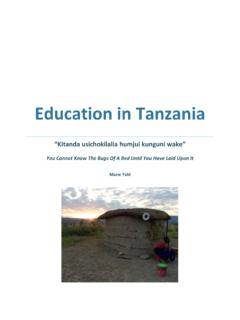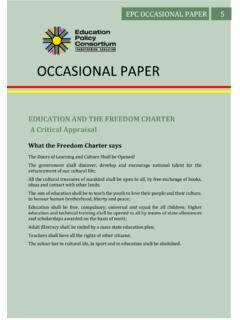Transcription of Basic Education Rights Handbook – Education …
1 CHAPTER 11 LANGUAGE IN SCHOOLSN ikki SteinBasic Education Rights Handbook Education Rights in South Africa Chapter 11: Language in schoolsBasic Education Rights Handbook Education Rights in South Africa Chapter 11: Language in schools205204 HOME LANGUAGEKEYWORDS AND CONCEPTSThe term language in Education is made up of the following concepts that inform, firstly, how teachers communicate with learners; and secondly, the content of what they teach: The language of learning and teaching (often referred to as LOLT , medium of instruction or language of instruction ) is the language used in the classroom throughout the school day.
2 If the language of instruction is isiZulu, for example, this means that the teacher will speak isiZulu when teaching mathematics, natural science, and economic and management studies. Learners will be evaluated on their grasp of the subject matter of that particular learning area, rather than the language of instruction itself. They will be required to complete the assessments in isiZulu. They must therefore have a good understanding of the language of instruction, so that they are able to grasp the subject matter of their learning areas. The home language (sometimes referred to as the mother tongue ) is one of the learning areas included in the school curriculum.
3 This is the language the learner knows best, and is most comfortable reading, writing and speaking. For this reason, the home language taught to the learner at school is often (but not always) the same as the language the learner speaks at home. The first additional language (referred to as the FAL ) is a learning area included in the curriculum as a second language for learners. The learner is less fluent in this language than his or her home language, but will reach a stage at which he or she is comfortable to speak, read and write this first additional language.
4 A second additional language (referred to as the SAL ) is an additional language that forms part of the curriculum, and will be counted as a third language for introduction of different languages as part of the school curriculum is referred to in government policies as additive multilingualism . What this means is that a learner s skills in his or her home language are developed and strengthened, and then other languages are introduced into the learner s curriculum once this has happened. The reasoning behind this is that the learner will be able to consolidate his or her language and other skills in their home language, and will then easily be able to acquire skills in other languages.
5 For this reason, many experts in Education support this is different from language immersion, which means that the LOLT is different from a learner s home language, and so the learner learns both the language skills and the substance of the learning area at the same 29(2) of the Constitution provides that every learner has the right to receive a Basic Education in the language of his or her choice, where this is reasonably practicable. This right is an important recognition of equality and diversity, and the need to depart from a history in which Education and language in Education , in particular was used as a vehicle to implement and strengthen apartheid.
6 Through this right, learners diversity and individuality is recognised, and this can facilitate the important objective of unlocking their -LW MI PUOULIMITAALB asic Education Rights Handbook Education Rights in South Africa Chapter 11: Language in schoolsBasic Education Rights Handbook Education Rights in South Africa Chapter 11: Language in schools207206 LAW AND POLICYBACKGROUND: LANGUAGE IN Education IN THE CONTEXT OF OUR HISTORYThe apartheid government used Education as one of its primary tools to enforce separate development, and to systematise the deep discrimination against the majority of our population.
7 A key aspect of this was the apartheid government s policies on language in primary trigger for the Soweto Uprising on 16 June 1976 was the apartheid government s issue of a decree relating to the language of instruction in senior primary and secondary schools. The Bantu Education Department imposed on schools an instruction that English and Afrikaans would be the language of instruction at school, on an equal basis. Understandably, the learners felt that Afrikaans was being forced on them, and that their home languages were being resistance to this, and the denial of access to Education in the language of a learner s choice, gave rise to one of the most significant days in our history.
8 Twenty thousand learners protested against this decree, and were met with violence from the police. Hundreds of young South Africans lost their lives fighting for recognition of their home languages, and the right to receive a quality Basic Education in those we discuss below, there is now express constitutional recognition of that right. However, there are many obstacles to its effective CONSTITUTIONA rising from this context, Section 29(2) now specifically protects the right to receive Basic Education in the language of one s choice:Everyone has the right to receive Education in the official language or languages of their choice in public educational institutions where that Education is reasonably practicable.
9 In order to ensure the effective access to, and implementation of, this right, the state must consider all reasonable educational alternatives, including single medium institutions, taking into account: a. equityb. practicability c. the need to redress the results of past racially discriminatory laws and is discussed below, the national Department of Basic Education (DBE) has interpreted this provision to mean that learners may select any one of the official languages of South Africa, which, as per Section 6(1) of the Constitution, are Sepedi, Sesotho, Setswana, siSwati, Tshivenda, Xitsonga, Afrikaans, English, isiNdebele, isiXhosa and 6 of the Constitution sets out specific measures to promote the official languages of South Africa, against the background of the historically diminished use and status of our indigenous languages.
10 In line with this, Section 9(3) of the Constitution specifically prohibits unfair discrimination on one or more of the grounds listed in that section, including race and language. As we discuss below, language in Education and particularly, the language policies adopted by school governing bodies have the potential to bring about issues on the grounds of race, culture and ethnic and social Education POLICY ACTThe National Education Policy Act (NEPA) sets out the principles according to which the Minister of Basic Education must determine language Act specifically empowers the Minister to determine a national policy for language in Education .
